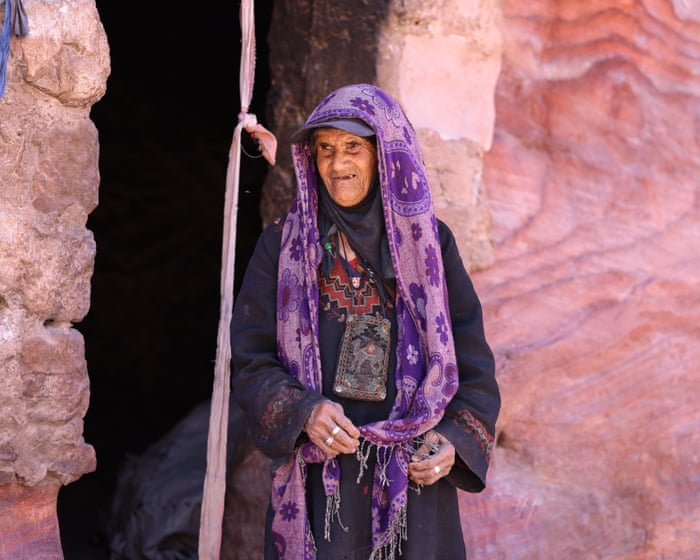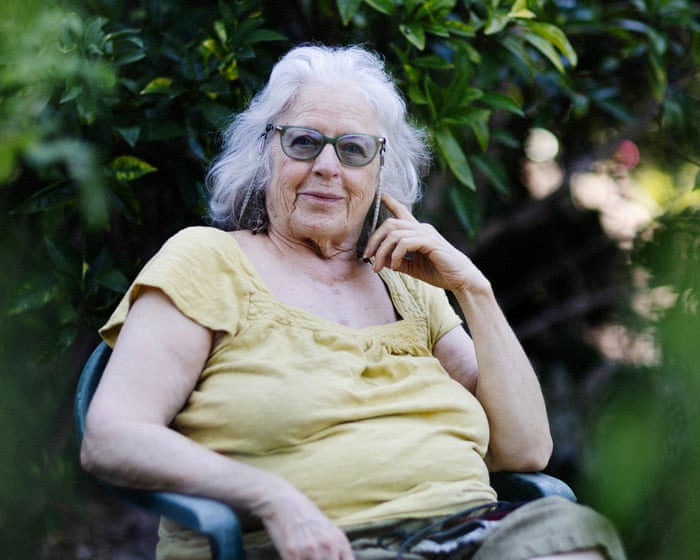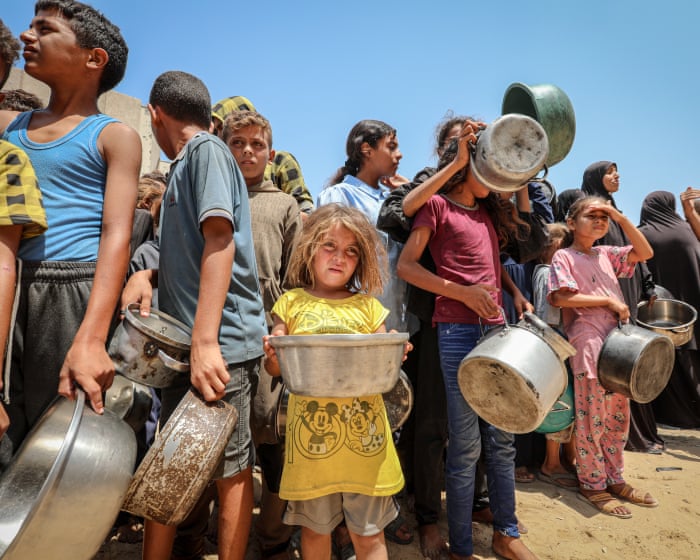Hundreds of patients and staff were killed in a hospital massacre. Unarmed men of fighting age were separated from others and executed at close range. Civilians attempting to flee were robbed of their possessions and forced to pay ransoms. In many cases, the attackers filmed their own acts of violence.
These accounts of brutality from the Sudanese city of El Fasher, which was seized by the paramilitary Rapid Support Forces (RSF) last weekend, reflect a recurring pattern.
In 2023, as many as 15,000 civilians—mostly from the non-Arab Masalit ethnic group—were killed in massacres in Geneina, the capital of West Darfur, as the RSF and allied militias took control of the city. Fighters went from house to house on a killing spree, burning homes and camps for internally displaced people.
This April, the RSF killed more than 1,500 civilians at the Zamzam displacement camp within 72 hours. The camp, located south of El Fasher, was home to around 500,000 people. A Guardian investigation uncovered evidence of ethnically targeted killings, mass executions, and widespread abductions.
Both massacres forced hundreds of thousands to flee, with many still missing. Zamzam was emptied, and many of its former residents relocated to El Fasher.
Since the RSF captured El Fasher from the army on October 26, the death toll is estimated to be in the thousands, though the exact number remains unknown.
For the past 18 months, as the RSF laid siege to the city, NGOs and war observers repeatedly warned of an impending bloodbath. Given the nature of the RSF’s earlier attacks, they argued it was only a matter of time before mass violence occurred.
A Predictable Cycle of Violence
Sudan’s civil war began in April 2023, when a power struggle between the armed forces, led by General Abdel Fattah al-Burhan, and the RSF, commanded by former warlord General Mohamed Hamdan Dagalo (known as Hemedti), erupted into violence in the capital, Khartoum. By the conflict’s second anniversary, 13 million people had been displaced—4 million of them to neighboring countries. Half of Sudan’s 51 million population required food aid, making it one of the world’s worst humanitarian crises by many measures.
Since the war started, the RSF has carried out numerous ethnically motivated killings in Darfur, the western region where El Fasher is located.
In July, Nazhat Shameem Khan, a deputy prosecutor at the International Criminal Court, informed the UN Security Council that she believed war crimes and crimes against humanity were still being committed in Darfur. Last month, a UN expert group stated that both sides in the conflict—the RSF and Sudan’s armed forces—had committed war crimes.
In January, then-US Secretary of State Antony Blinken declared that the RSF had committed genocide in Darfur. Both sides deny these allegations.
Last month, the Quad group of countries—the United States, the United Arab Emirates, Saudi Arabia, and Egypt—agreed on a “roadmap” for peace in Sudan. This included a three-month humanitarian truce to allow aid delivery, followed by a permanent ceasefire. However, none of this was implemented as the RSF tightened its control around El Fasher, and warnings continued about what its fighters would do if they captured the city.
“This was predicted and predictable,” said Kate Ferguson, co-director of Protection Approaches, a UK charity that works to prevent identity-based violence and mass atrocities. “We knew this would happen. I don’t think there can be a head of state or a foreign minister who wasn’t warned and didn’t know this was a serious likelihood.”
Mohamed Badawi, a lawyer and activist with the Uganda-based African Centre for Justice and Peace Studies, accused Sudan’s armed forces of failing in their duty to protect civilians in El Fasher by withdrawing from the city. He claimed they had done the same in Geneina, stating, “They moved back… and left.””Leave those people behind,” he said. “They know atrocities are about to be committed.”
Sudan Control Map
Grim Echoes of Past Atrocities
The scale and ethnically targeted nature of the massacres in Sudan are reminiscent of past atrocities. Over 200,000 people were killed in the Darfur genocide in the early 2000s. Arab Janjaweed militias, backed by Omar al-Bashir’s regime, helped suppress an insurgency by non-Arab ethnic groups. The Janjaweed later evolved into the Rapid Support Forces (RSF).
“This group has been carrying out exactly this kind of military operation, involving large-scale abuses against civilians, for more than 20 years,” said Alex de Waal, executive director of the World Peace Foundation at Tufts University. “The first documented instance with Hemedti himself personally present was in November 2004 in a town called Adwa.”
Some experts note that the killings in El Fasher bring to mind the early days of the genocide in Rwanda. In 1994, ethnic Hutu extremists killed over 800,000 people, mostly from the Tutsi minority, in about 100 days. Badawi also drew a parallel between Sudan’s civil war and Liberia’s first civil war from 1989 to 1997, where mineral wealth—gold in Sudan and diamonds in Liberia—fueled the violence.
[Image: A genocide memorial church in Kibuye, Rwanda, displaying the skulls of more than 11,000 Tutsi victims murdered by Hutu extremists in 1994. Photograph: Andy Hall/The Observer]
The path to even limited justice for victims has been long and complex. Twenty years after the Rwanda genocide, a UN-established tribunal convicted 61 individuals of genocide, crimes against humanity, and war crimes. In 2012, former Liberian president Charles Taylor was convicted by a special international court for aiding and abetting war crimes and crimes against humanity in Sierra Leone. Last year, Liberian senators voted to establish a war crimes court to investigate crimes against humanity during the country’s two civil wars.
Earlier this month, two decades after the last genocide in Darfur, former Janjaweed commander Ali Muhammad Ali Abd-al-Rahman, also known as Ali Kushayb, was convicted by the International Criminal Court for crimes against humanity.
De Waal pointed out that Kushayb turned himself in, but he doubts the key figures in Sudan’s current war will do the same.
Psychological Warfare and Communications Blackout
As with previous RSF massacres, much of the evidence from El Fasher comes from the fighters themselves, who film killings and post the videos online.
Experts say the RSF intentionally shares these images as a form of psychological warfare to demonstrate their power and intimidate opponents and potential victims, driven by hatred of non-Arab ethnic groups.
[Video: Drone footage posted by the Rapid Support Forces shows people fleeing El Fasher.]
Using satellite imagery and archive photos, the Guardian’s video team analyzed and located footage posted online on October 27, revealing several mass killings following the fall of El Fasher.
Atrocities in El Fasher
Footage from the engineering faculty at the University of El Fasher shows a fighter shooting a man in the back at close range. Dozens of bodies lie on the floor in pools of blood. The same fighter then shoots another man who is lying among the bodies with his hand raised.
Several videos filmed by RSF members in an area northwest of the city show dozens of bodies next to burning vehicles along a trench.
[Video: Footage shot by RSF fighters shows mass killing west of the Sudanese city El Fasher.]
In one clip, a fighter known as Abu Lulu is seen threatening and then murdering a man lying on the ground. On Thursday, the RSF published videos of his arrest.
Satellite imagery has confirmed reports of mass killings. The Yale Humanitarian Research Lab analyzed satellite images of the Saudi maternity hospital.Since Tuesday, October 28, satellite images from the Yale Humanitarian Research Lab have revealed clusters of objects resembling human bodies and reddish stains on the ground, thought to be blood, at the El Fasher South Hospital. The lab also identified signs of mass killings at a former children’s hospital in eastern El Fasher, which the Rapid Support Forces (RSF) had converted into a detention center, and evidence of systematic killings east of the city.
Survivors have corroborated these findings with accounts of executions by the RSF. Nawal Khalil, a nurse who was working at the El Fasher South Hospital when the RSF seized the city, told the Guardian that they killed six wounded soldiers and civilians in their beds.
In a video statement on Wednesday, RSF leader Hemedti pledged to hold accountable any fighter who violated a person’s rights. However, a communications blackout has limited the flow of information from El Fasher, similar to previous RSF takeovers. The fate of approximately 260,000 people believed to have been in the city when it fell remains unknown.
Additionally, over 35,000 people have been displaced since October 26 near El Obeid in southern North Kordofan, raising concerns that the city may be the RSF’s next target.
On October 31, protests took place in Omdurman against the reported atrocities in El Fasher.
Experts argue that stopping the RSF requires pressuring the United Arab Emirates, which has been accused of arming the group, along with Saudi Arabia and Egypt, who support Sudan’s military. The Guardian reported that British military equipment licensed for export to the UAE has been found with the RSF on Sudanese battlefields, according to UN Security Council documents. The UAE has consistently denied providing military support to the RSF.
Caitlin Howarth, director of conflict analytics at the Yale Humanitarian Research Lab, emphasized that meaningful, swift, and severe sanctions against the UAE and other arms suppliers are necessary, rather than just statements of condemnation.
Additional reporting by Kaamil Ahmed and Laure Boulinier.
Frequently Asked Questions
Of course Here is a list of FAQs about A Sudanese Massacre Foretold The Chillingly Familiar Rampage of the RSF in El Fasher designed to be clear concise and in a natural tone
BeginnerLevel Questions
1 What is the RSF
The RSF or Rapid Support Forces is a powerful paramilitary group in Sudan It grew out of the Janjaweed militias and is now a formal military force but it is currently fighting a war against the Sudanese national army
2 Where is El Fasher and why is it important
El Fasher is the capital city of North Darfur a region in western Sudan Its a major humanitarian hub and the last major city in the region not fully controlled by the RSF making it a critical strategic and symbolic target in the ongoing war
3 What is meant by a massacre foretold
This phrase means that many peopleincluding aid groups diplomats and civilianswere warning for weeks that a largescale brutal attack on El Fasher was imminent based on the RSFs past actions and the military buildup around the city
4 What happened in El Fasher
The RSF launched a major military assault on the city and its surrounding areas This involved heavy shelling of residential neighborhoods ground attacks and a siege that cut off essential supplies leading to widespread civilian casualties destruction and a severe humanitarian crisis
5 Why is this called chillingly familiar
Its called this because the RSFs tactics in El Fashertargeting civilians burning homes and committing ethnic violenceare a brutal repeat of the atrocities they committed during the Darfur genocide 20 years ago
Advanced Detailed Questions
6 What is the connection between the RSF and the Janjaweed
The RSF is the direct successor to the Janjaweed militias These were Arab militias armed by the former Sudanese government in the early 2000s to brutally suppress nonArab rebel groups in Darfur committing widespread war crimes that were labeled a genocide
7 What are the main goals of the RSF in this conflict
The RSFs primary goal is to defeat the Sudanese Armed Forces and gain total control over Sudan Capturing El Fasher would give them dominance




